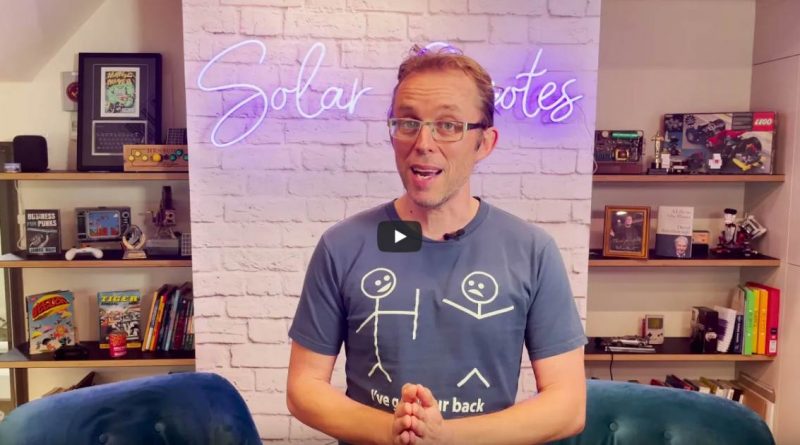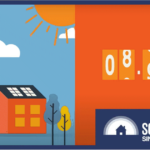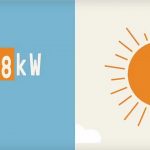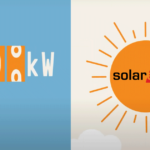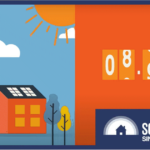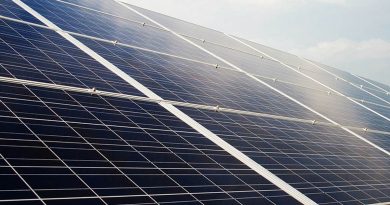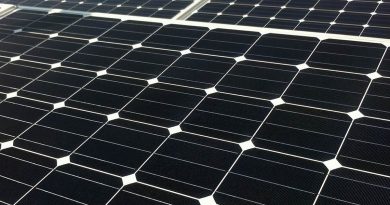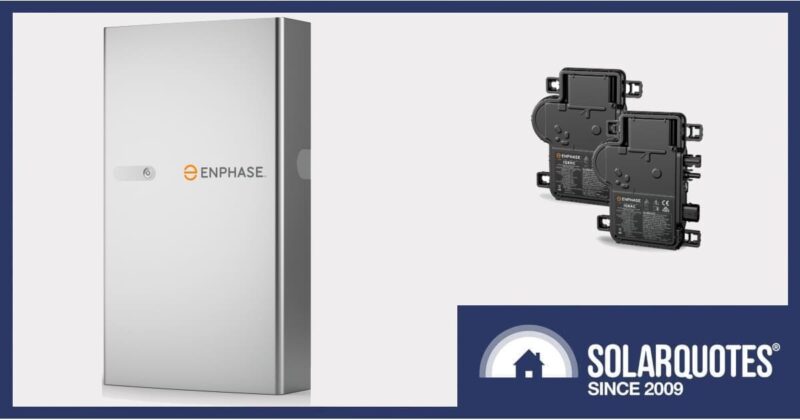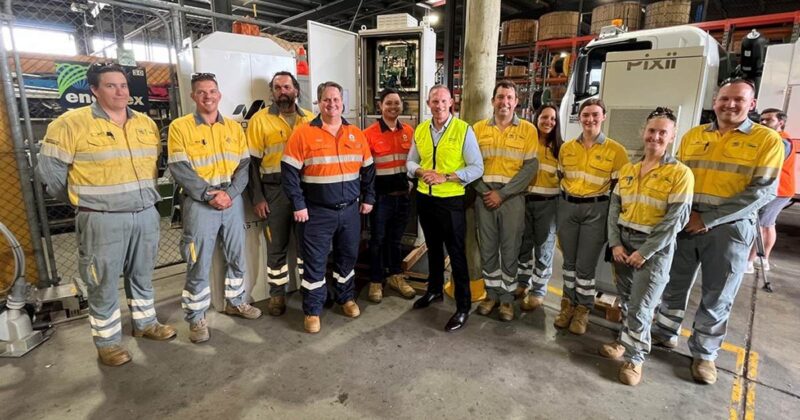Dynamic Solar Exports Are The Future – And A Good Thing
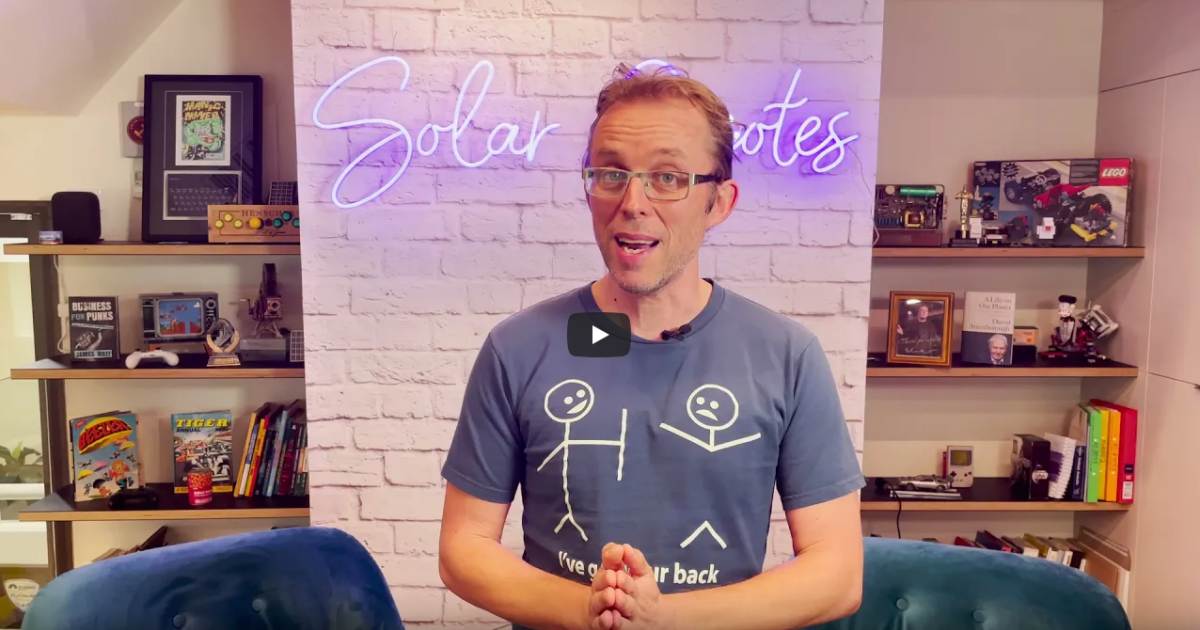
SolarQuotes founder Finn Peacock weighs in on dynamic (aka flexible) solar exports, which he believes are the future for home solar power in Australia – and around the world.
Transcript:
Hello from South Australia, where South Australia Power Networks, the local electricity network, have just announced that they’re going to start trials of something called dynamic solar export limiting.
Now, why should you care about this if you don’t live in South Australia? Because it’s coming to the rest of Australia – probably – that’s my educated opinion. Not that I’m that educated, but this is really, really important because it’s a paradigm shift in how we use and generate energy.
Solar energy has always been variable. In the morning it’s like this. If it’s a sunny day, it goes like this. In the middle of the day, it’s like this and then it comes down. Yeah, we get that. But everything else is going to become variable to deal with the variable renewables that are going to become pretty much a hundred percent of the grid in the next 10 years probably.
So that means how you use your energy has got to become more variable. And by that, I mean, you actually have to change how you use energy to integrate more solar into the grid. So, you don’t just switch stuff on and off and it goes on and off, and you don’t think about it. You have to think about when you’ll use it. Well, in fact you won’t have to think about it – a computer will think about it for you and switch these things on and off.
And the same with exporting to the grid. You just can’t bang all this lovely solar into the grid. Sometimes the grid doesn’t need it. So again, it won’t be your choice. In South Australia’s example, it will be SAPN and they’ll have a pretty smart computer deciding, “hey, you’re only allowed to export this, you’re only allowed to export that”. Everything’s going to go variable and controlled in a really sophisticated manner.
About SAPN’s Dynamic Solar Exports Trial
So, I just want to talk about this trial because it’s really, really interesting. How’s it going to work?
Well, they’re going to give you two options in certain suburbs of Adelaide. They’re going to say, if you want an export limit, you can either have a fixed one-and-a-half kilowatt export limit – really puny, you don’t want that. Or you can have 10 kilowatts.
Wow. That’s big. That’s twice what we can get now for most people in Adelaide.
But the caveat is every now and again, they can drop that right down to zero. So, it’s dynamic.
So, you’ve got a big computer up here – think about it, this is really sophisticated, this is like serious engineering. You’ve got a big computer up here that’s looking at potentially millions of solar systems in the future. And it’s looking at the grid and it’s monitoring in real time what’s happening in the grid. And it’s saying, “hey, that house can only export 1.5, that house can export 10 kilowatts”.
This is really cool. And I think it’s the future.
Solar Curtailment A Feature, Not A Bug
We’ve got to stop throwing our hands up in the air and saying, “Oh, this is terrible. We should be able to export all our solar energy!”
Look, if you’re off-grid, if you really hate all this stuff and you go off-grid, you’re wasting solar energy all the time. Because you’re not connected to a network, when your batteries are full you stop producing solar. So, it’s not a big deal.
As one of my favorite analysts, Jenny Chase from the UK says:
“Curtailment of solar is a feature, not a bug.”
So, all I want to say today is we’ve got to get into a new paradigm of not worrying about people externally controlling our solar and not worrying about curtailing our solar when it’s not useful to the grid.
And this SA Power Networks trial, I think is brilliant. And I think it’s the future. I think that’s what’s going to happen to solar systems not just all over Australia, but all over the world. We’re world leaders in this.
But what you care about if you’ve got a solar system is what does dynamic export limiting mean for your bottom line if you sign up for it, because it is optional at the moment.
Well, I don’t know. It depends how you use energy, but I’m pretty confident that overall you’ll be better off, because most of the time you’ll be able to export more surplus into the grid.
Next, you should be better off, especially if you’re savvy about how you use your energy.
Don’t buy a dumb solar system, buy a smart solar system that has the smarts there to not, well, you don’t need the smarts not to export to the grid because SAPN will handle that for you, but a smart system that will manage your demand. It will switch stuff on and off at the right time and make intelligent decisions about when to use your electricity. Take it to the bank, you’ll be better off with dynamic export limiting if you do that.
Original Source: https://www.solarquotes.com.au/blog/dynamic-solar-exports-mb1969/

